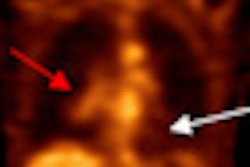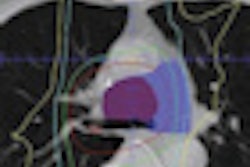Research from the University of Washington in Seattle suggests that FDG dose for positron emission mammography (PEM) could be reduced by as much as 70% without altering image quality, according to a study being touted by PET developer Naviscan of San Diego.
Preliminary results using phantom images indicate that injected dose can be reduced to approximately 3 mCi of FDG -- three to four times lower than the dose commonly used in clinical practice -- while maintaining lesion detectability.
These results are the basis of an ongoing clinical trial at the Swedish Cancer Institute to determine the optimized dose levels of FDG to produce high-quality PEM images in patients with breast cancer.
The lead study author, Lawrence MacDonald, MD, research assistant professor in the department of radiology at the University of Washington, and colleagues used the Naviscan PEM scanner in the research.
The results were presented at the American Association of Physicists in Medicine (AAPM) annual meeting.
Related Reading
Naviscan touts PEM study, May 26, 2010
Naviscan to export PEM to Colombia, March 30, 2010
Naviscan teams with Alliance Imaging, March 22, 2010
Naviscan adds Johns Hopkins install, February 18, 2010
Naviscan signs Florida client, January 20, 2010
Copyright © 2010 AuntMinnie.com




















